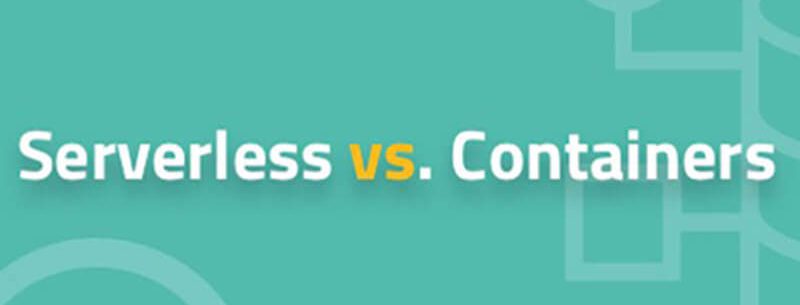
Serverless vs. Containers. How to differentiate ?

Samira Kabbour
CMO
Serverless functions and containers are two of the hottest topics in the IT world today.
They’re also two technologies that share a lot in common, after all, both are basically ways to deploy code inside isolated, discrete environments.
They are by no means identical technologies, but in the abstract, they function in similar ways.
Much confusion exists about best practices and security management and how they differ between serverless and containers. Among the issues to consider, you must decide how to change your architecture strategy when dealing with serverless functions as opposed to containers.
What is Serverless, What are Containers and What Do They Have in Common?
A detailed definition of serveless computing and containers is beyond the scope of this article. But here are quick definitions:
- Serverless computing refers to an architecture in which code is executed on-demand. Serverless workloads are typically in the cloud, but on premise serverless platforms exist, too.
- Containers provide portable environments for hosting an application, or parts of an application. The most common container platform today is Docker, although the containerization concept dates back to the introduction of the chroot call to Unix in the late 1970s.
Serverless adoption is growing
According to the New Stack, over 75 percent of organizations are already using or planning to use serverless in the next 18 months.
From AWS Lambda to Google Cloud Functions enterprises have more cloud provider options than ever before when integrating serverless into their application portfolio.
What is serverless?
Serverless computing provides a way to deploy snippets of code aka functions triggered by predefined events.
When serverless technology is deployed correctly, it can save money, time, and resources all while allowing developers to focus on writing code rather than solving infrastructure issues.
Developers don’t need to think about the underlying infrastructure, just their code and the corresponding business logic. Serverless lower financial costs by scaling to zero. When applications aren’t running, they don’t consume computing resources.
Serverless allows enterprises to run snippets of code in the cloud.
Containers provide portable environments for hosting an application, or parts of an application. The most common container platform today is Docker, although the containerization concept dates back to the introduction of the chroot call to Unix in the late 1970s.
While serverless functions and containers are designed to meet different needs and are deployed using different tools, they share a lot in common:
- They allow you to deploy finite pieces of code and are therefore well suited for microservices architectures.
- They are easy to deploy across distributed architectures. For that reason, you commonly see them being used in the cloud.
- Serverless functions and containers start quite quickly (usually within a few seconds)
- Both rely heavily on APIs to coordinate their integration with external resources.
- Both do not typically have built-in persistent storage; instead, they rely on external resources for persistent storage needs.
- They are frequently used to build immutable infrastructure (although strictly speaking, not all serverless or containerized architectures are necessarily immutable)
The list could go on, but these are the essential traits that containers and serverless functions share in common for Managing and Securing Serverless vs. Containers.
Given the similarities described above, you might think that the strategy you use for managing and securing serverless functions can be employed for containers, too. You’d be right to an extent.
There are as well key components of a software management and security strategy and containers can access. You don’t want a coding flaw or security breach inside your The bottom line In short, containers and serverless are similar in several key respects and the strategies you use to manage them and keep them secure should be similar, too.
However, there are some very important differences when it comes to managing and securing certain dimensions of a serverless or containerized workload, such as the extent of the responsibility you bear for the host environment and the tools you can use.
In a simple world, your container and serverless strategies could be identical, but in the real world, you have to factor these variations in when you make a plan for keeping your serverless functions and containers lean, mean and secure. In this article, we’ve covered only the basics.
Source: https://thenewstack.io: originally appeared in The New Stack.



